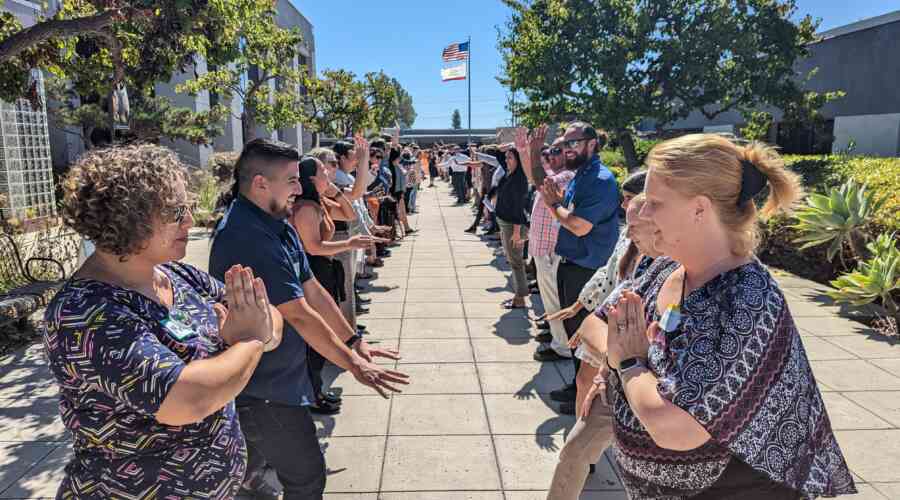What we learned from the CS Fundamentals Workshops

CS Fundamentals - San Diego attendees participate in mirroring exercise.

CS Fundamentals - San Diego attendees participate in mirroring exercise.
It’s hard to believe it’s already been about a month since we wrapped the first leg of our CS Fundamentals tour! And we’ll be honest, it’s taken us about that long to recover (suffice it to say that we may not be brave enough to do four events in two weeks again). ;)
At the end of every glorious, humbling, enlightening workshop last month, after the tables were cleared and our boxes were packed, our team sat down to run through what worked, what didn’t, and what we learned from you.
We decided to take those team conversations and turn them into a series of blog posts. So without further ado, here are some of our highlights from our first five CS Fundamentals Workshops.
Community schools are NOT a collection of co-located or “wrap-around” programs and services. Instead, community schools exemplify a whole child and whole school improvement strategy where districts and their schools work closely with teachers, students, and families, and partner with community agencies and local government to bring together community voices and resources to improve student outcomes.
Why is it important to make the distinction? Because looking at community schools as just a bunch of programs means leaving out relationships and partnerships – two crucial elements that are the secret sauce behind any effective community school.
Receiving a California Community Schools Partnership Program (CCSPP) grant from the state does not automatically come with a tailor-made community school strategy. If only it were that easy!
The grant can provide some protected space (and funding) for a strategic design process – but when the grant ends, your strategy must not.
We often hear, “we already do all of those things so we must already be a community school.” But the reality is that if there is no intentional connection and interdependence among the pieces (e.g., family engagement, student supports, linked learning, inclusion, expanded learning), you are most often left with a bunch of fragmented programs, goals, and staff that are often even harder to bring together into a cohesive strategy. A community school strategy must attend to those fundamental disconnections in existing programs and relationships.
Community schools only move forward when we are able to come together and decide what it means to do this work together.
Of course, it’s not always easy to find the time, space, or energy to do this work. Sitting down to talk about everything we’re not doing with our colleagues (especially when it feels like our plates can’t possibly take any more) is HARD. Having those conversations with vulnerability when talking through our blind spots is HARD. Making a plan for our funding when we’re not quite sure how to get started is HARD.
But when we do come together and decide to do this meaning-making as a team, we’re able to understand how we individually and collectively contribute to a shared responsibility to ensure our students’ success. We start to support one another and see each person as a valued resource to improve our work. We start to create space for each of us to feel safe to celebrate each other’s successes, and honestly point out things we could be doing differently.
The reality is, there are so many more perspectives and voices – beyond the (phenomenal) team members that attended our workshops – that need to be part of community school planning and implementation.
Our intention is that you use your time at CS Fundamentals as a starting point for the kinds of conversations you’ll take to your school, district, and community when you leave.